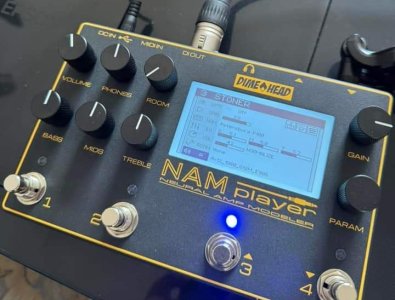Sascha Franck
Goatlord
- Messages
- 11,144
but you have a defined end-point on real potentiometers, so with experience, you can dial them in blindly.
Ahem... while I do get the point (and I even expected it to be raised), how often exactly did you actually move any amp's tone stack knobs to their end points? I can safely say how often I'm doing so (and all the amp controls on my pedal board are WYSIWYG, treated 100% as in the analog world), namely: never. This is like having an answer for a non-existing problem.
The pedal which I had in mind having the same distance between footswitches is the Ampero HoTone Stage II.
Even given your picture (the toppers are blurrying things a bit, too), there's somewhat noticeably more space between the Ampero switches (and fwiw, I actually find the Ampero switches to be almost too close to each other already - the distance on, say, the GT-1000 is as small as I wanted to deal with). And yes, in this case there's no "what's a centimeter among friends?" thing, even just a centimeter can actually make or break it).


